
Panzer General is a 1994 computer wargame developed and published by Strategic Simulations Inc. (SSI). It simulates conflict during World War II. The designers of Panzer General were heavily influenced by the Japanese wargame series Daisenryaku.

Steel Panthers is a series of computer wargames, developed and published by several different companies, with various games simulating war battles from 1930 to 2025. The first Steel Panthers game was released in 1995, and the most recent update was released in 2018 and is still updated regularly (yearly).

AH-64D Longbow is a realistic combat flight simulator of the AH-64D Apache Longbow attack helicopter. Released on June 3, 1996, for the PC, this simulation was developed at Origin Systems. AH-64D Longbow was the second simulator released under the Jane's Combat Simulators line from Electronic Arts.
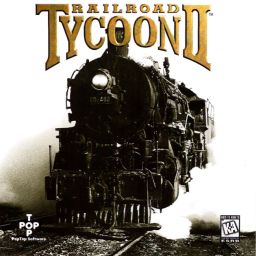
Railroad Tycoon II is a business simulation video game in the Railroad Tycoon series developed by PopTop Software and published by Gathering of Developers. It was released for Microsoft Windows, Mac OS, PlayStation and Dreamcast. It was later ported and released for Linux.
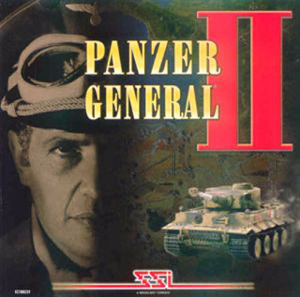
Panzer General II is a computer wargame by Strategic Simulations, Inc. Released October 15, 1997, Panzer General II is the sixth SSI game in the Panzer General series and the first in the "Living Battlefield" series. It takes place during World War II, covering events from the Spanish Civil War in 1938 to hypothetical battles in 1946. In the April 2000 issue of the magazine PC Gamer, it was voted the 44th best computer game of all time, and the highest rating in the Panzer General series. The game was re-released in 2010 on GOG.com.

Fleet Command, previously labelled as Jane's Fleet Command, is a real-time tactics naval warfare simulation computer game released in May 1999. It was developed by Sonalysts Inc. and published by Electronic Arts (EA). The game licensed parts of Jane's Information Group's military information database, which was used as an in-game "Jane's Library", reference material that the player could refer to while in-game. Jane's also licensed to EA the "Jane's" name and the "Jane's Combat Simulations" logo, and the game was marketed under the "Jane's" name, much like the previous "Jane's Fighters Anthology", also published by Electronic Arts.

Close Combat: A Bridge Too Far, or Close Combat II, is a World War II real-time computer wargame, developed by Atomic Games, and released on October 13, 1997. The second installment of the Close Combat series, the game is played on a two-dimensional map, between two players.

Close Combat III: The Russian Front is a 1999 computer wargame developed by Atomic Games and published by Microsoft. It is the third game in the Close Combat series. It revolves around the Eastern Front during World War II, and takes players from the invasion of the Soviet Union to the final battle for Berlin in 1945. A remake, Close Combat: Cross of Iron, was released in 2007.

Panzer General 3D Assault is a 1999 computer wargame developed by Strategic Simulations, Inc (SSI) and published by The Learning Company. It is the third game in the Panzer General series, following Panzer General and Panzer General II.

Panzer Commander is a computer tank-driving simulator released in 1998. Developed by Ultimation Inc. and published by Strategic Simulations Inc. (SSI). The game is set in World War II as a tank simulator.

Warlords III: Reign of Heroes is a computer wargame released in 1997, and the third release in the Warlords video game series. In 1998 it was followed by the expansion Warlords III: Darklords Rising.

The Operational Art of War I: 1939–1955 is a 1998 computer wargame developed and published by TalonSoft. Designed by Norm Koger, it covers military conflicts around the world at the operational level of war, between 1939 and 1955.
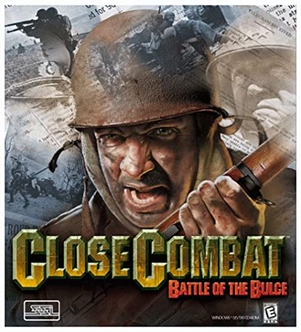
Close Combat: Battle of the Bulge, sometimes known as Close Combat IV: Battle of the Bulge, is a 1999 computer wargame developed by Atomic Games and published by Strategic Simulations Inc. (SSI). A simulation of the Battle of the Bulge during World War II, it is the fourth game in the Close Combat series. A remake, Close Combat: Wacht am Rhein, was released in 2008.

Warcraft II: Tides of Darkness is a fantasy real-time strategy computer game developed by Blizzard Entertainment and released for MS-DOS and Microsoft Windows in 1995 and Mac OS in 1996 by Blizzard's parent, Davidson & Associates. A sequel to Warcraft: Orcs & Humans, the game was met with positive reviews and won most of the major PC gaming awards in 1996. In 1996, Blizzard released an expansion pack, Warcraft II: Beyond the Dark Portal, for DOS and Mac OS, and a compilation, Warcraft II: The Dark Saga, for the PlayStation and Sega Saturn. The Battle.net edition, released in 1999, included Warcraft II: Beyond the Dark Portal, provided Blizzard's online gaming service, and replaced the MS-DOS version with a Windows one.
Battleground is a series of turn-based computer wargames developed and published by TalonSoft for Microsoft Windows between 1995 and 1999. Nine games were released in the series, each based on a different historical battle.

Steel Panthers II: Modern Battles is a 1996 computer wargame developed and published by Strategic Simulations. It is the sequel to Steel Panthers and the second entry in the Steel Panthers series. The game was designed by Gary Grigsby and Keith Brors.
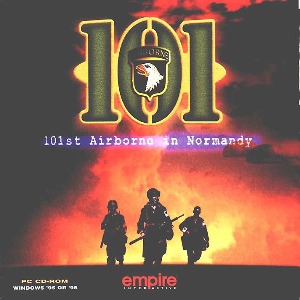
101: The Airborne Invasion of Normandy is a 1998 computer wargame developed by Interactive Simulations and published by Empire Interactive. Key members of the team had previously worked at Random Games, developer of Soldiers at War and Wages of War.

Steel Panthers III: Brigade Command 1939–1999 is a 1997 computer wargame developed and published by Strategic Simulations, Inc. It is the third game in the Steel Panthers series, following Steel Panthers (1995) and Steel Panthers II: Modern Battles (1996). Like its predecessors, it was designed by Gary Grigsby and Keith Brors.

Battle of Britain is a 1999 computer wargame developed and published by TalonSoft. It was designed by Gary Grigsby and Keith Brors.
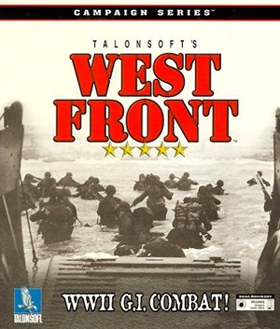
West Front is a 1998 computer wargame developed and published by TalonSoft. It is the sequel to East Front and the second game in the Campaign series.



















